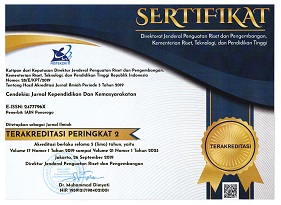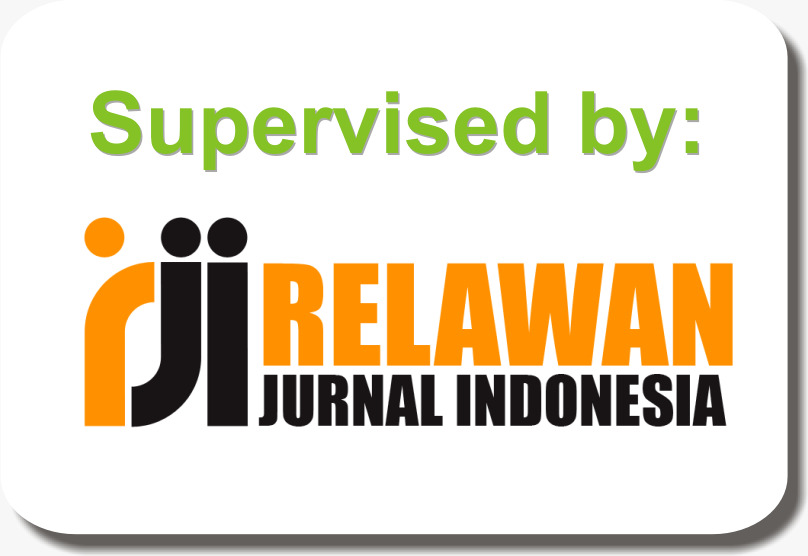Taá¹bÄ«q Al-Manhaj Al-Takamuly FÄ« Mu’assasÄt Al-Ta’lÄ«m Al-”˜Ä€ly
DOI:
https://doi.org/10.21154/cendekia.v1i1.3701Keywords:
thought, integration, curriculum, education, institutionAbstract
This study aims to (1) describe the idea of an integrated curriculum in higher education, (2) depict its implementation at the university level, and (3) find out the impact of the curriculum on university development. This research used a qualitative approach. It employed a literature study. The researchers gathered the data from book reviews and related journals. Data analysis involved collecting the data, sorting, presenting, and drawing conclusions. The findings showed that (1) the idea of an integrated curriculum was depicted in a tree-shaped scientific structure; (2) the integrated curriculum was done by requiring all students to learn Arabic and English, as well as providing opportunities for all students to memorize the Quran and practice Islamic life; (3) integrated curriculum contributed to accelerating the development and internationalization of institutions. Moreover, it improved human resources competencies.
References
Ahmad, Lutfi Barakat. “Fil Fikri Al-Tarbawi Al-Islami. Darul Marikh”. Al-Riyadh: Darul Marikh, n.d, 47.
Al-Hamd, Ahmad. Al-Tarbiyah Al-Islamiyah. Al-Riyadh: Dar Isybiliya, 2002.
Al-Osaili, Abdul Aziz Ibrahim, Manhaj Al-Muhtawa Fi Ta’lim Al-Lughah Al-Arabiyah Lin Nathiqin Bi Lughatin Ukhra, Al-Mamlakah Al-”˜Arabiyah Al-Su’udiyah: Majallah Jami’ah Al Imam Muhammad bin Su’ud Al-Islamiyah, 46. (2005), 358-474.
Al-Makawi, Muhammad Asyraf, Asasiyatu al-Manahij, (Riyadh: Dar an-Nasyr ad-Dauli, 1427), 11.
Ali Abdul Halim Mahmud. “Al Tarbiyah Al Diniyah Al Ghaaibah Ali Abdul Halim Mahmud.Pdf.” Cairo: Dar al Tauzi’ wa al Nashr al Islamiyah, 2000.
Ali, Said Ismail. Al-Fikr Al-Tarbawi Al-Islami Wa Tahaddiyatu Al-Mustaqbal. Al-Qahirah: Dar as-salam, 2006.
An-Nahlawi, Abdurrahman, Ushul At-Tarbiyah Al-Islamiyah Wa Asalibuha Tadrisiha, (Libanon: Dar al-Fikr al-Mu’ashir, 2007), 93.
Anis, Ibrahim at al, Al-Mu’jam Al-Wasit (Al Qahirah: Maktabah Al-Syuruq Al-Dauliyah, 2004), 798.
Baharis, Adnan Hasan Sholeh. Mas’uliyatu Al-Ab Al-Muslim Fi Tarbiyati Al-Walad Fi Marhalati at-Thufulah.” Jeddah: Daarul Mujatam’ Lin Nasyr wat Tauzi’, 2005.
Bahasa, Tim Pusat. “Pedoman Pendidikan Pusat Bahasa.” Malang, 2019.
Bahruddin, Uril. Maharat Al-Tadris; Nahwa I’dad Mudarris Al-Lughah Al-”˜Arabiyah Al-Kuf.’ Malang: UIN Maliki Press, 2011.
Bahruddin, Uril, “أثر القرآن الكريم ÙÙŠ اللغة العربية,” ألسنتنا, (2016), 122-127
Bahruddin, U., & Febriani, S.R. Student’s perceptions of Arabic online learning during COVID19 emergency. Journal for the Education of Gifted Young Scientists, 8(4) (2020), 1483-1492. http://dx.doi.org/10.17478/jegys.760735
Bahruddin, Uril Bahruddin, and Uril Bahruddin Bahruddin. “Musykilah Ta’limiyah Al-Lughah Al-”˜Arabiyah Bi Jami’Ah Maulana Malik Ibrahim Malang Wa Al-Hulul Al-Muqtarahah Laha.” LiNGUA: Jurnal Ilmu Bahasa Dan Sastra 12, no. 1 (2017). https://doi.org/10.18860/ling.v12i1.4115.
Fachrunnisa, Olivia, and Farookh Khadeeer Hussain. “Blockchain-Based Human Resource Management Practices for Mitigating Skills and Competencies Gap in Workforce.” International Journal of Engineering Business Management 12 (2020): n. pag.
Huda, Syamsul. “Integrasi Ilmu Antara Wacana Dan Praktif: Studi Komparatif UIA Malaysia & UIN Malang.” Journal of Chemical Information and Modeling, 2013.
Ibnu Manzor, Jamaluddin Muhammed Bin Mukrim Al-Masri. Lisan Al- Arab. Cairo: Darul Maárif, 1930.
Madekur, Ali Ahmad, Manahij Al-Tarbiyah Ususuha wa Tathboqatuha (Al-Qahirah: Dar al-Fikr al-'Arabi, 2001), 29.
Miftahudin. Model-Model Integrasi Ilmu Perguruan Tinggi Keagamaan Islam, Yokyakarta: Diandra Kreatif (Kelompok Penerbit Diandra), 2018.
Miqdad Yaljin. At-Tarbiyah Al-Akhlaqiyah Fi Al-Islam, (Riyadh: Dar Alam al-Kutub, 2002)
Muhamadul, B.Y. “Strategies and Obstacles on Educational Policy of Arabic Language Program.” Global Journal Al-Thaqafah, no. 2232”“0474 (2007).
Mukhibat, M., Fahim Tharaba, M., & Abdalhafiz Salah, M, "The Management of IAIN Ponorogo-Assisted Madrasas: Religious, Populist, Center of Excellence, Diversity." Cendekia: Jurnal Kependidikan dan Kemasyarakatan [Online], 18.2 (2020): 171-187.
Suprayogo, Imam, Paradigma Pengembangan Keilmuan Di Perguruan Tinggi. Malang: UIN Press, 2005.
Suprayogo, Imam, Pendidikan Berparadigma Al Quran. Malang: Aditya Media, 2004.
Suprayogo, Imam, At-Taghallub ”˜ala Da’f al-Kifayah al-Lughawiyah Lada Thullab al-Jami’at al-Islamiyah fi Indonesia, Makalah (2019), 4.
Verbytska, Anna, and Nataliia Kholiavko. “Competitiveness of Higher Education System: International Dimension.” Economics & Education 5.1 (2020): 7”“14.
Wulandari, D., & Dewi, D. A. (2021). Implementasi Nilai Pancasila: KPK sebagai Upaya mengatasi Kasus Korupsi di Indonesia. Edumaspul: Jurnal Pendidikan, 5(1), 565”“579.
Yahya, Fata. "The Transformational Paradigm of The Pesantren Curriculum Innovation." Cendekia: Jurnal Kependidikan dan Kemasyarakatan [Online], 1.1 (2021): 109-125.
Zainiyati, Husniyatus Salamah. “Landasan Fondasional Integrasi Keilmuan Di UIN Maulana Malik Ibrahim Malang Dan UIN Sunan Ampel Surabaya.” ISLAMICA: Jurnal Studi Keislaman, (2016).
Downloads
Published
Issue
Section
License
Copyright & License
Please find the rights and licenses in Cendekia: Jurnal Kependidikan dan Kemasyarakatan. By submitting the article/manuscript, the author(s) agree with this policy. No specific document sign-off is required.
1. License
The non-commercial use of the article will be governed by the Creative Commons Attribution license as currently displayed on the Creative Commons Attribution-NonCommercial 4.0 International License.
2. Author(s)' Warranties
The author warrants that the article is original, written by the stated author(s), has not been published before, contains no unlawful statements, does not infringe the rights of others, is subject to copyright that is vested exclusively in the author and free of any third party rights, and that any necessary written permissions to quote from other sources have been obtained by the author(s).
3. User/Public Rights
The spirit of Cendekia: Jurnal Kependidikan dan Kemasyarakatan is to disseminate articles published as free as possible. Under the Creative Commons license, Cendekia: Jurnal Kependidikan dan Kemasyarakatan permits users to copy, distribute, display, and perform the work for non-commercial purposes. Users will also need to attribute authors and Cendekia: Jurnal Kependidikan dan Kemasyarakatan on distributing works in the journal and other media of publications. Unless otherwise stated, the authors are public entities as soon as their articles got published.
4. Rights of Authors
Authors retain all their rights to the published works, such as (but not limited to) the following rights;
- Copyright and other proprietary rights relating to the article, such as patent rights,
- The right to use the substance of the article in own future works, including lectures and books,
- The right to reproduce the article for own purposes,
- The right to self-archive the article,
- The right to enter into separate, additional contractual arrangements for the non-exclusive distribution of the article's published version (e.g., post it to an institutional repository or publish it in a book), with an acknowledgment of its initial publication in this journal (Cendekia: Jurnal Kependidikan dan Kemasyarakatan).
5. Co-Authorship
If the article was jointly prepared by more than one author, any author submitting the manuscript warrants that he/she has been authorized by all co-authors to be agreed on this copyright and license notice (agreement) on their behalf and agrees to inform his/her co-authors of the terms of this policy. Cendekia: Jurnal Kependidikan dan Kemasyarakatan will not be held liable for anything arising due to the author(s) internal dispute. Cendekia: Jurnal Kependidikan dan Kemasyarakatan will only communicate with the corresponding author.
6. Royalties
Being an open accessed journal and disseminating articles for free under the Creative Commons license term mentioned, the author(s) are aware that Cendekia: Jurnal Kependidikan dan Kemasyarakatan entitles the author(s) to no royalties or other fees.
7. Miscellaneous
Cendekia: Jurnal Kependidikan dan Kemasyarakatan will publish the article (or have it published) in the journal if the article's editorial process is completed. The editors of Cendekia: Jurnal Kependidikan dan Kemasyarakatan may modify the paper to a style of punctuation, spelling, capitalization, referencing, and usage that deems appropriate. The author acknowledges that the article may be published so that it will be publicly accessible, and such access will be free of charge for the readers, as mentioned in point 3.

















